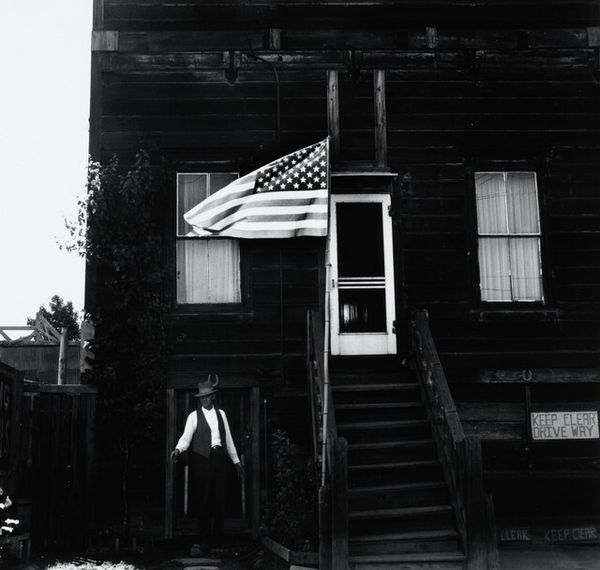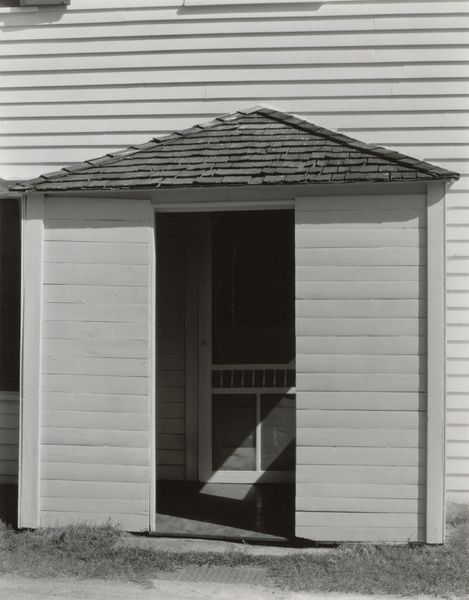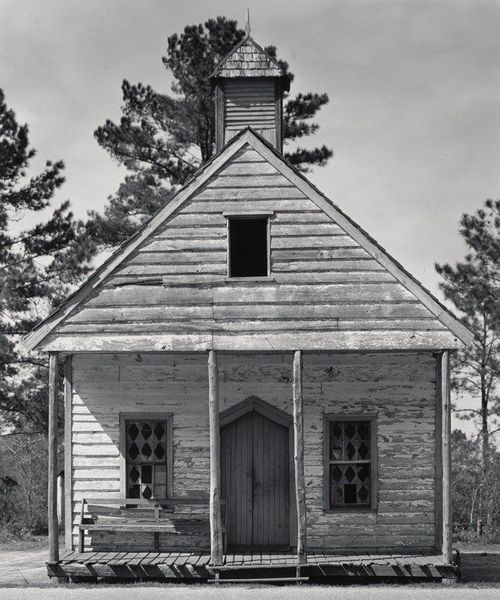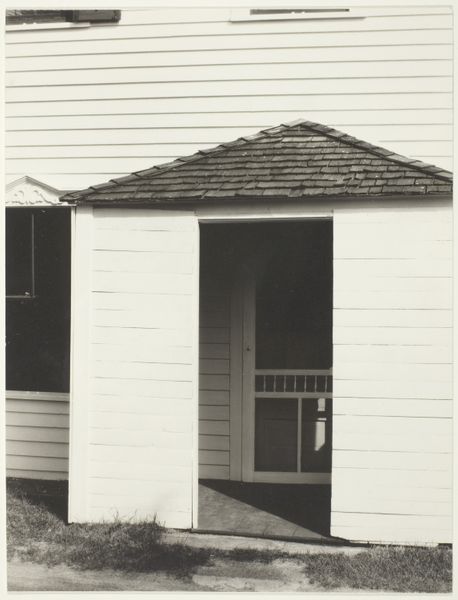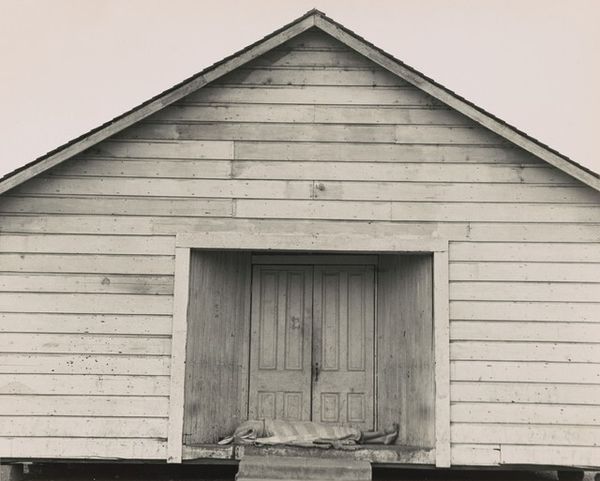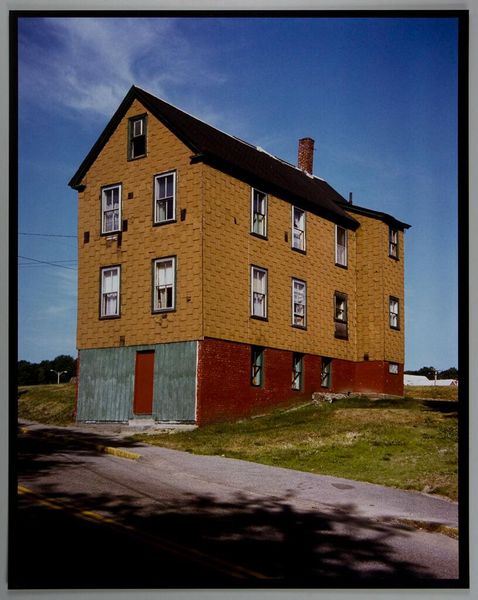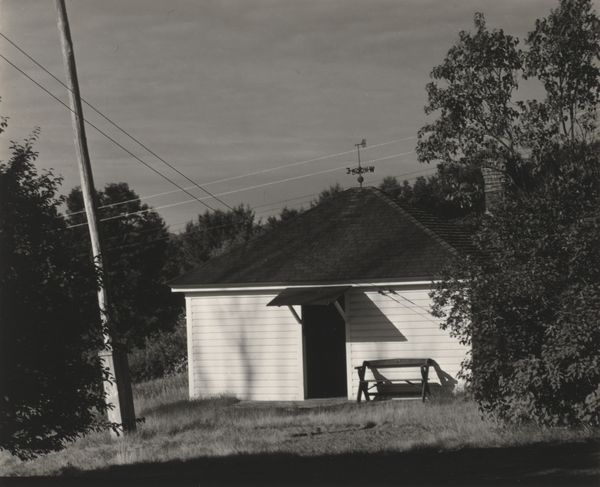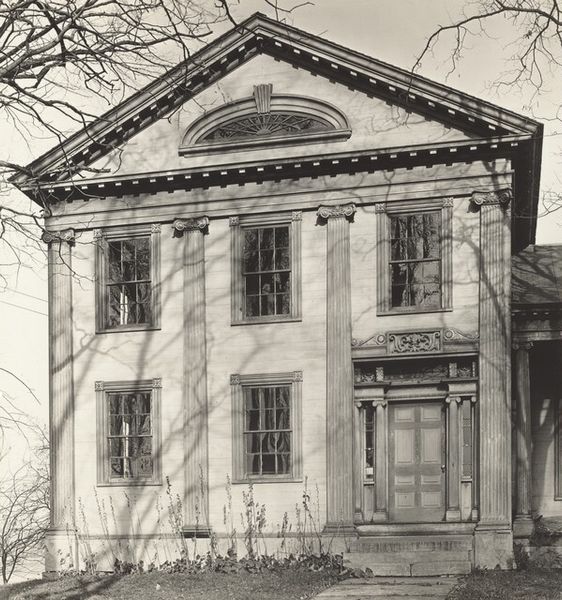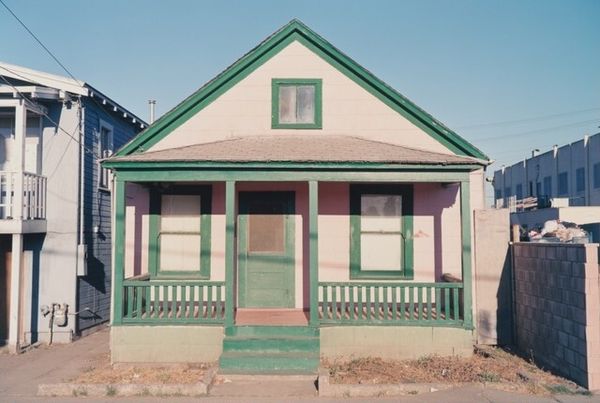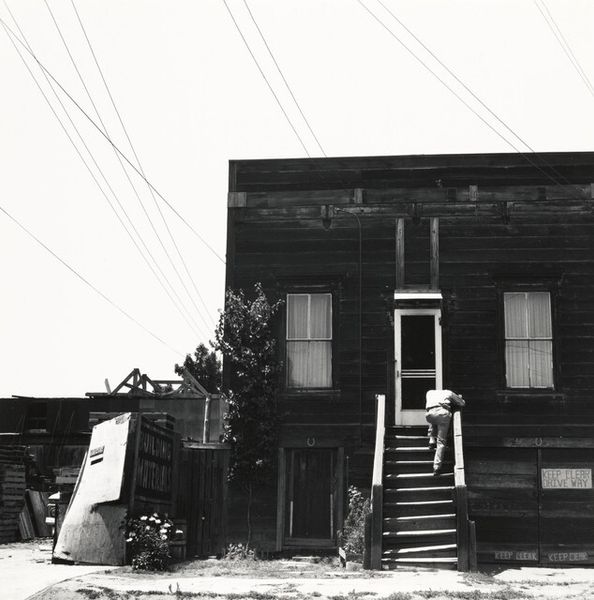
photography
#
contemporary
#
black and white photography
#
landscape
#
black and white format
#
historic architecture
#
photography
#
monochrome photography
#
cityscape
#
monochrome
#
modernism
#
realism
#
historical building
Dimensions: image: 26.9 × 22.8 cm (10 9/16 × 9 in.) sheet: 35.5 × 27.9 cm (14 × 11 in.)
Copyright: National Gallery of Art: CC0 1.0
Curator: Robert Adams’ monochrome photograph, “Store, Elizabeth, Colorado,” likely captured between 1965 and 1988, presents a stark architectural portrait. What strikes you upon viewing it? Editor: The silence, mainly. It’s a study in arrested time, isn't it? The building stands with a somber facade and its windows are unreadable, secretive. You immediately imagine all the lives it may have witnessed, or been a part of. Curator: Adams is renowned for documenting the changing American West, often focusing on the impact of suburbanization. This work seems typical in his dedication to highlighting what he described as a "taciturn eloquence" in everyday scenes. It stands as a record of buildings as community hubs and evidence of decline. Editor: Exactly, and isn't there a story inherent to its structure? The plain, almost severe, construction contrasted with the small details - the door, the step. These subtle gestures hint at individuality trying to survive against a tide of homogenization. Think about it as a symbol of resisting erasure, particularly relevant in post-war rural settings, the history of colonization... who owned the Store? who shopped here? It could trigger really thoughtful dialogue, I think. Curator: It also exemplifies Adams' photographic approach—direct, unromantic, a form of social commentary conveyed through careful composition and tone. What would you say is the effect of presenting the scene in black and white? Editor: The black and white lends the image a sense of gravity, stripping away the distraction of color, leaving us with the raw bones of the scene and urging us to remember and consider. Also, it throws it back into the past. But do you not wonder how the architecture, built by someone, at a particular moment of societal history, now, represents more than architecture. I feel like I understand, at a visceral level, Adams' need to document it. Curator: Absolutely, capturing, for the present and posterity, these critical turning points and transitions. I see now how its documentary clarity grants space for introspection on both personal and societal scales. Editor: Right, and isn't that precisely what makes it such a relevant artwork? Thank you, that perspective gives me plenty to reflect on.
Comments
No comments
Be the first to comment and join the conversation on the ultimate creative platform.

